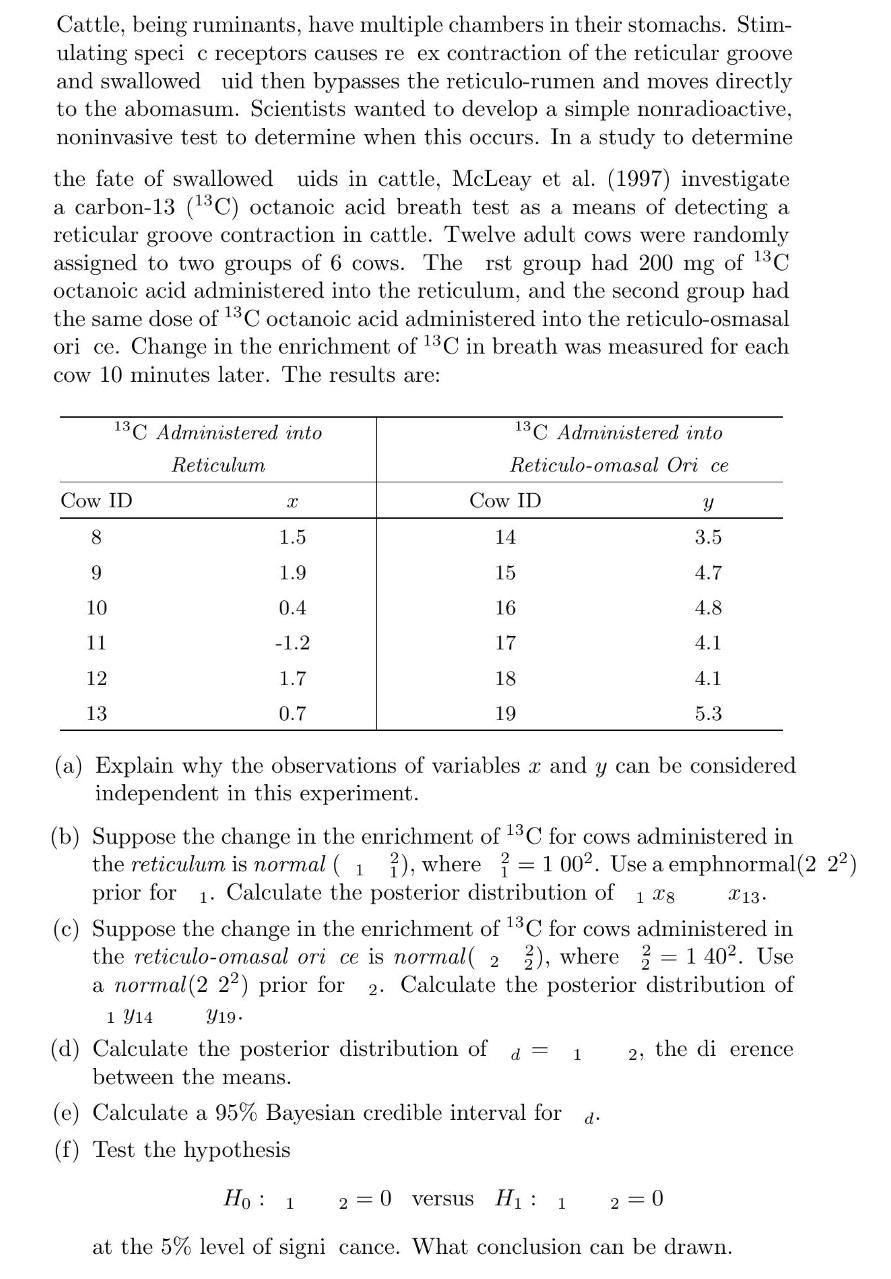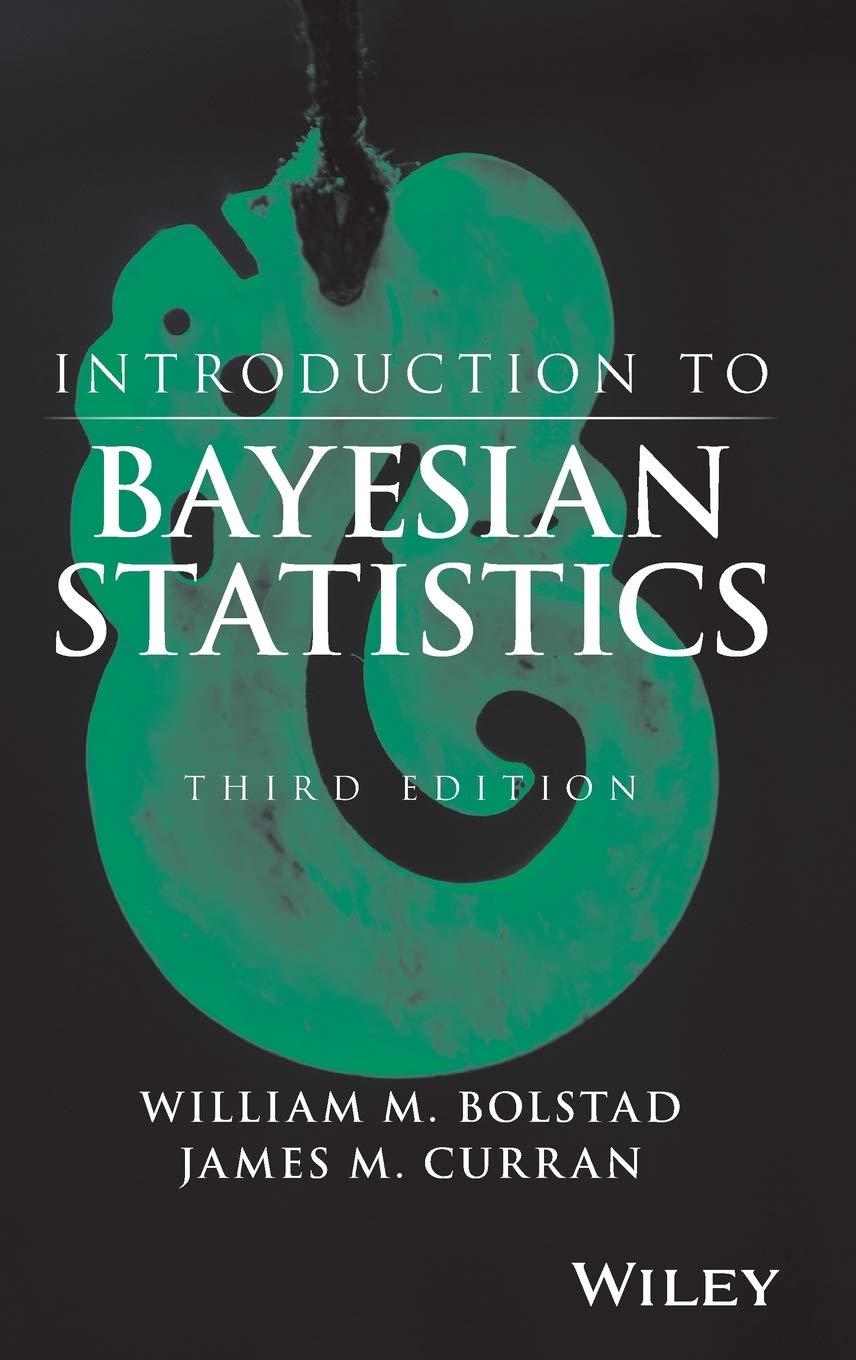Question:
The experiment described in Exercise 13.6 was repeated on another set of 7 cows (McLeay et al., 1997). However, in this case, the second treatment was given to the same set of 7 cows that were given the first treatment, at a later time when the first dose of \({ }^{13} \mathrm{C}\) had been eliminated from the cow. The data are given below:
Data From Exercise 13.6

Transcribed Image Text:
Cattle, being ruminants, have multiple chambers in their stomachs. Stim- ulating speci c receptors causes re ex contraction of the reticular groove and swallowed uid then bypasses the reticulo-rumen and moves directly to the abomasum. Scientists wanted to develop a simple nonradioactive, noninvasive test to determine when this occurs. In a study to determine the fate of swallowed uids in cattle, McLeay et al. (1997) investigate a carbon-13 (13 C) octanoic acid breath test as a means of detecting a reticular groove contraction in cattle. Twelve adult cows were randomly assigned to two groups of 6 cows. The rst group had 200 mg of 13 C octanoic acid administered into the reticulum, and the second group had the same dose of 13 C octanoic acid administered into the reticulo-osmasal ori ce. Change in the enrichment of 13C in breath was measured for each cow 10 minutes later. The results are: 13C Administered into Reticulum 13C Administered into Reticulo-omasal Ori ce Cow ID Xx Cow ID Y 8 1.5 14 3.5 9 1.9 15 4.7 10 0.4 16 4.8 11 -1.2 17 4.1 12 1.7 18 4.1 13 0.7 19 5.3 (a) Explain why the observations of variables x and y can be considered independent in this experiment. (b) Suppose the change in the enrichment of 13C for cows administered in the reticulum is normal ( 1 ), where 2 = 100. Use a emphnormal(2 22) prior for Calculate the posterior distribution of 1 x8 1. X13. (c) Suppose the change in the enrichment of 13C for cows administered in the reticulo-omasal ori ce is normal( 2 ), where 2 = 140. Use a normal (2 22) prior for 2. Calculate the posterior distribution of 1 Y14 Y19. (d) Calculate the posterior distribution of d = 1 between the means. (e) Calculate a 95% Bayesian credible interval for d (f) Test the hypothesis 2, the di erence Ho: 1 2 = 0 versus H 1 2 =0 at the 5% level of signi cance. What conclusion can be drawn.








